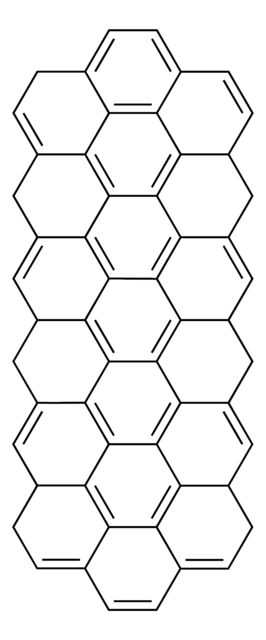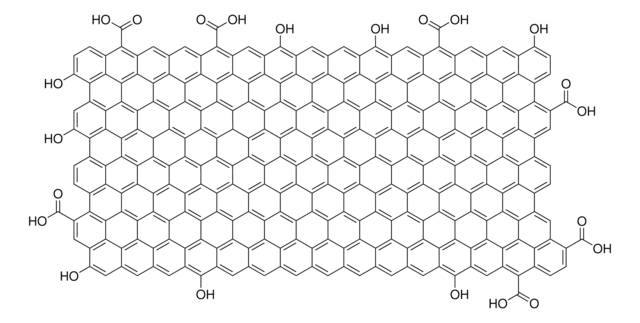797774
Graphene nanoribbons
About This Item
Productos recomendados
Ensayo
≥90.0% carbon basis (TGA)
Formulario
powder
L × An
2-15 μm × 40-250 nm
densidad
2.2745 g/mL (He gas method)
densidad aparente
0.0970 g/mL (Mercury Porosimetry)
¿Está buscando productos similares? Visita Guía de comparación de productos
Descripción general
Aplicación
- Composites.
- Conductive inks.
- Electrodes for LiB.
- Energy storage & harvesting applications.
- Bio-medical applications.
- Preferred dispersing organic solvents: pyrrolidones and chlorinated solvents.
- Less preferred dispersing organic solvents: cyclohexanone and γ-butyrolactone.
- Aqueous dispersions are possible at 0.1mg/mL with triton-X-100, sodium cholate and deoxycholate and cellulose-based surfactants.
Nota de análisis
ID/IG = 0.65±0.07
I2D/IG = 0.74±0.03
2D FWHM = 63 cm-1
Información legal
Palabra de señalización
Danger
Frases de peligro
Consejos de prudencia
Clasificaciones de peligro
Carc. 2 - Repr. 2 - STOT RE 1 Inhalation
Órganos de actuación
Lungs
Código de clase de almacenamiento
6.1C - Combustible acute toxic Cat.3 / toxic compounds or compounds which causing chronic effects
Clase de riesgo para el agua (WGK)
nwg
Elija entre una de las versiones más recientes:
Certificados de análisis (COA)
¿No ve la versión correcta?
Si necesita una versión concreta, puede buscar un certificado específico por el número de lote.
¿Ya tiene este producto?
Encuentre la documentación para los productos que ha comprado recientemente en la Biblioteca de documentos.
Artículos
Graphene is a unique two-dimensional (2D) structure of monolayer carbon atoms packed into a dense honeycomb crystal that has attracted great interest due to its diverse and fascinating properties.
Since its discovery little more than a decade ago,1 the two-dimensional (2D) allotrope of carbon—graphene—has been the subject of intense multidisciplinary research efforts.
Graphene's unique properties spark interdisciplinary interest; its honeycomb structure offers electrical, optical, and mechanical marvels.
Graphene nanoribbons (GNRs) are quasi-one-dimensional narrow strips of graphene comprised of sp2-hybridized carbon atoms arranged into hexagonal honeycomb lattice configurations.
Nuestro equipo de científicos tiene experiencia en todas las áreas de investigación: Ciencias de la vida, Ciencia de los materiales, Síntesis química, Cromatografía, Analítica y muchas otras.
Póngase en contacto con el Servicio técnico







